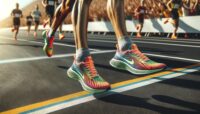Key Takeaways
- Walking with a purpose in mind has an effect on self-assessed health scores, a recent study finds.
- Researchers noted that when you have a purpose, you may walk faster and for a longer duration.
- To keep walking more productive, a trainer suggests setting goals and progressing the activity.
Walking with a set destination, rather than strolling casually, can boost our self-assessment of health and lead to better health outcomes, according to the results of a new study published in August in the Journal of Transport & Health.
These findings should encourage people to walk more for their health, especially in scenarios that involve walking to and from one’s house, or within one’s own neighborhood.
Study Analysis
The recent research looked at data from over 125,000 people between the ages of 18 and 64, separating their self-reported walking trips into categories such as shopping, recreation, and work.
They found associations between walking with purpose and health outcomes. The biggest gain was in walking from home to work, which increased chances of being in a higher health category by 6%. That type of walking was also shown to have the fastest speed, averaging 2.69 miles per hour, compared to 2.55 mph for recreational walking.
Step Up the Pace
A key tip when it comes to making your walking more effective is to pick up the tempo a little. This is one reason why health outcomes improved when people were walking to places that required some degree of punctuality.
Similarly, a 2019 study looked at gait speed and its potential effect on health biomarkers like cholesterol levels, waist-to-hip ratio, white blood cell count, cardiorespiratory fitness, brain volume, and even gum health.
Researchers found those who walked at slower speeds had more biomarkers related to aging compared to faster walkers, and they also tended to have decreased brain volume. Walking speed could be a predictor of future health, believes lead researcher Line Jee Rasmussen, PhD, of Duke University.
“Gait speed is not the only indicator of aging, but we can use it to determine brain health throughout a lifetime,” she says. “It’s so predictive that it may be possible to look at how well children do on cognitive tests and then use that to predict how slowly they will be walking when they reach middle age.”
Added Benefits of Nature
How you walk matters, but also helpful is where. Walking with purpose may have even more benefits if combined with some type of nature, even if it’s along a tree-lined sidewalk.
A 2019 review from the World Health Organization looked at nine major studies from seven countries—representing over 8 million people—and found a significant association between exposure to green spaces in urban areas and better public health.
Mark Nieuwenhuijsen, PhD
Walking in greener spaces is particularly powerful because it can bring an overall sense of wellness and connection with nature, even if you don’t notice all the trees and grasses.
— Mark Nieuwenhuijsen, PhD
“We know that green space can reduce stress and improve mental health, may lead to more physical activity and social contacts, reduce air pollution, noise, and heat island effects, and improve our immune systems,” says co-author Mark Nieuwenhuijsen, PhD, an expert in environmental epidemiology and director of the Urban Planning, Environment and Health Initiative at the Barcelona Institute for Global Health. “That may all contribute to longer and healthier lives.”
Activities like walking in greener spaces are particularly powerful, he says, because it can bring an overall sense of wellness and connection with nature, even if you don’t notice all the trees and grasses.
Unfortunately, urban green spaces are not available to everyone. A 2017 report from the United States Department of Agriculture (USDA) highlighted green space limitations in densely populated urban areas, and noted disparities between health and well-being and lower socioeconomic status, particularly in areas with a higher proportion of Black or Latinx residents.
What This Means
With all of these aspects of walking considered, perhaps the biggest takeaway of all is to just start walking, regardless. Marie Urban, regional group training coordinator and personal trainer for Life Time, suggests these tips for getting started:
- Be realistic if you’re new to walking, like aiming to walk just twice a week
- Build in more purpose by parking further from stores when you do errands
- Set goals of walking slightly more during each walking session
- Begin to vary your walks for more intensity, like including hills
- Most of all, see walking as an enjoyable activity instead of a chore
Marie Urban
By challenging yourself and having fun with it, you can make walking into something you look forward to doing, and it has huge health benefits.
— Marie Urban
“People sometimes think of walking as boring or not as much exercise since it’s lower intensity,” says Urban. “But by challenging yourself and having fun with it, you can make walking into something you look forward to doing, and it has huge health benefits.”







